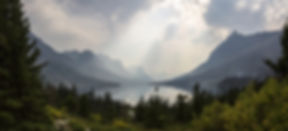

Call Us Now!
406-261-8865
Perennial Pepperweed




Perennial Pepperweed
(Lepidium latifolium)
Common Names:
Tall Whitetop, Giant Whiteweed, Perennial Peppergrass, Slender Perennial Peppercress, Broadleaf or Broadleaved Pepperweed, Ironweed
Description:
Perennial Pepperweed is a perennial of the mustard family. Plants have mulitiple stems and grow in stiff, erect masses that can reach eight feet in height. Leaves are bright green to grayish-green in color and lance-shaped. Lower leaves can be up to one foot in length and three inches wide and are toothed along the edges. Leaves tend to get smaller and less serraded as they extend up the stem. Flowering occurs from early summer into fall, and flowers are small, white, 4-petaled and borne in dense clusters near the end of the stems. Seeds are small and flattened pods about one tenth of an inch long and containing two seeds. These seeds remain on the plant throughout the winter and drop at irregular intervals. The base of the stem is semi-woody and this plant mainly spreads from its extensive and brittle roots that can grow up to six feet, but also spreads seed through the stem becoming brittle, breaking off and rolling along the ground to scatter seeds.
Key Features:
Basal rosette with petioled leaves and irregular and deeply lobed margins; pods with two seeds.
Habitat:
Perennial pepperweed prefers wet sunny conditions, but can grow in dry areas as well. Because of this flexibility with moisture it can be found in seasonally wet areas, riparian areas, along streams, rivers, marshes, roadsides, railways, ditches, hay meadows, pastures, cropland, waste places, hillsides, and sub-irrigated pasture.
Currently found in the following counties:
Beaverhead, Broadwater, Cascade, Chouteau, Deer Lodge, Flathead, Gallatin, Lake, McCone, Missoula, Powell, Sanders, Silver Bow, Teton, Wheatland
IWM
-
Herbicide
-
Cutting
Interesting Facts:
Perennial Pepperweed is toxic to livestock, it can inhibit growth of vital trees along waterways such as Cottonwood and willow, and it is used by florists in flower arrangements- therefore, be on the lookout in your local cemetaries and landfill sites.
Commonly Confused Plants:
-
Hoary cress (Cardaria draba), leaves have clasping bases, perennial pepperweed can also be distinguished by its waxy appearance.
Photo Credits: Joseph M. DiTomaso, University of California - Davis, Bugwood.org; James N. Stuart, New Mexico Dept. Game & Fish, www.flickr.com/photos/stuartwildlife/; Pedro Tenorio-Lezama, Bugwood.org